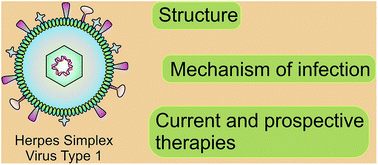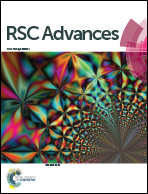In search for effective and definitive treatment of herpes simplex virus type 1 (HSV-1) infections
Abstract
Herpes Simplex Virus type 1 (HSV-1) is a nuclear replicating enveloped virus. It is considered to be one of the most frequent pathogens acquired by humans. Worldwide about 50–90% of individuals are seropositive for this virus. The symptoms of primary HSV-1 infections include appearance of watery blisters (cold sores) on the skin, tongue, lips, genitals or buccal mucosa and keratitis. HSV-1 infection is transmitted by direct contact with lesions or body fluids (typically saliva) and is incurable. Except for productive infections, HSV-1 can cause a latent infection of the host who becomes a lifelong viral reservoir vulnerable to reoccurrence of the disease. The presence of virus material may affect general health as the virus interferes in the host's cell life cycle. The viral genome stays in a latent state in the nucleus of sensory neurons of the trigeminal ganglia (TG) avoiding the host's immune system. These neurotropic and neuroinvasive properties of HSV-1 can cause life-threatening diseases like neurological disorders, encephalitis, and blindness. HSV infection is the most common cause of corneal blindness in the Western world. It is also linked to Alzheimer's disease. HSV-1 infections are sometimes dangerous for immunocompetent individuals and are very dangerous for babies and immunodeficient people. Currently, there is no drug available which would allow eradication of the virus from the infected person's body. Approved therapies for the HSV-1 infection are based on the application of inhibitors of the viral DNA replication. Although they are effective against primary infection, they cannot protect a person against the virus in the latent state resulting in the reoccurrence of the disease. The occurrence of the viral strains resistant to these drugs creates serious problems. Thus, there is a need to devise a novel approach for the development of drugs which could be effective against HSV-1, preferentially acting according to a different mechanism from those of the currently used compounds. This review presents the structure of HSV-1, the mechanisms of productive and latent infections, gives an overview of current approved therapies and proposes a novel approach to develop antiherpes agents which should be useful in these studies.

- This article is part of the themed collection: Coronavirus articles - free to access collection

 Please wait while we load your content...
Please wait while we load your content...